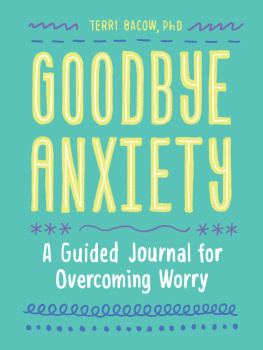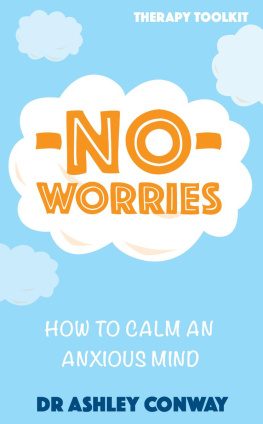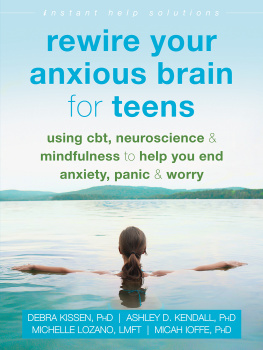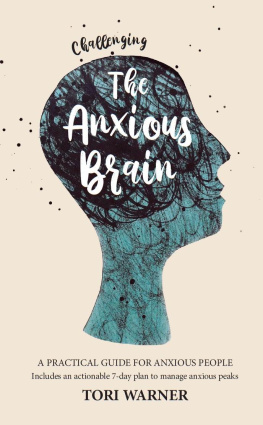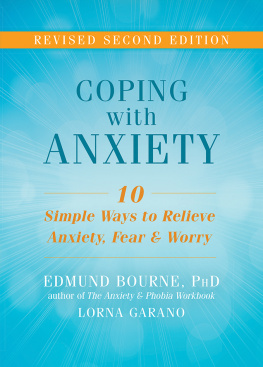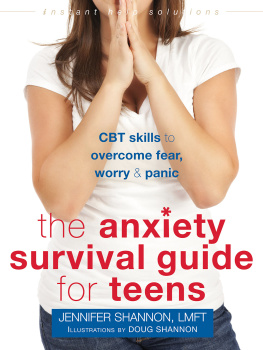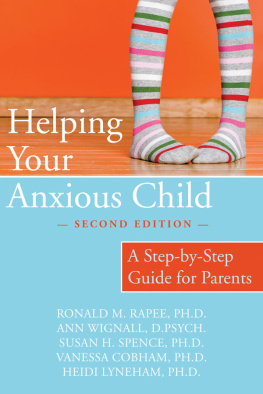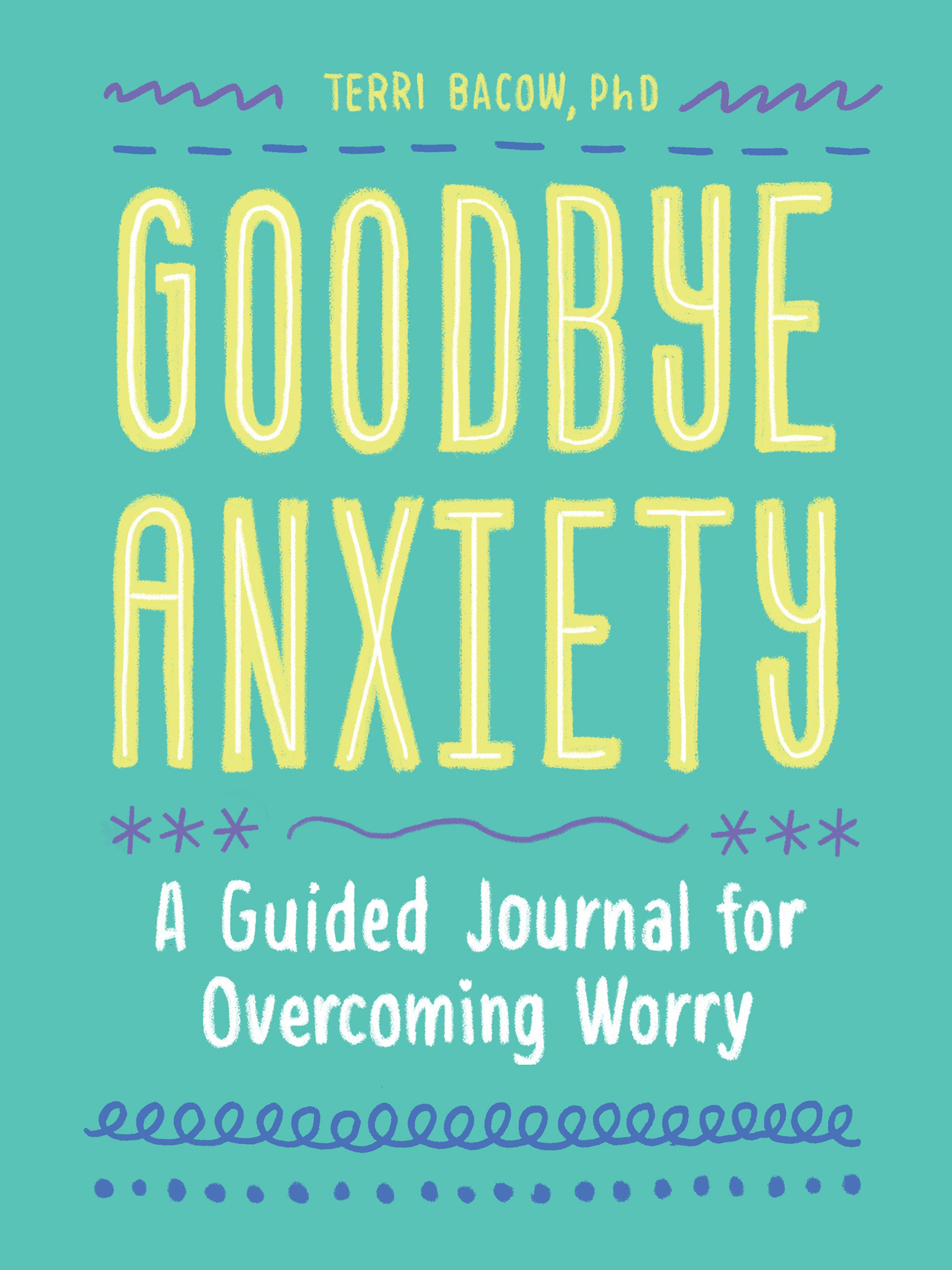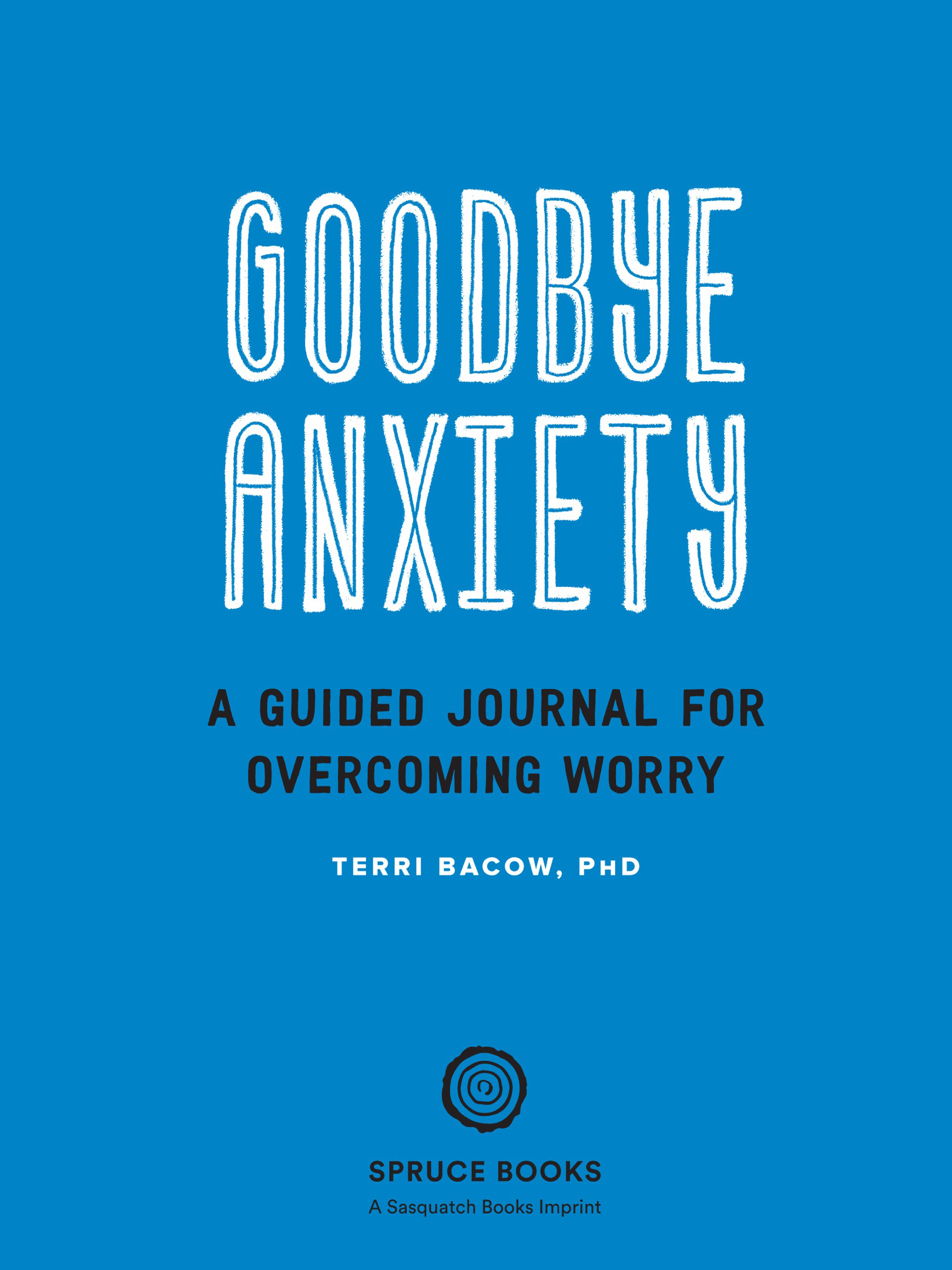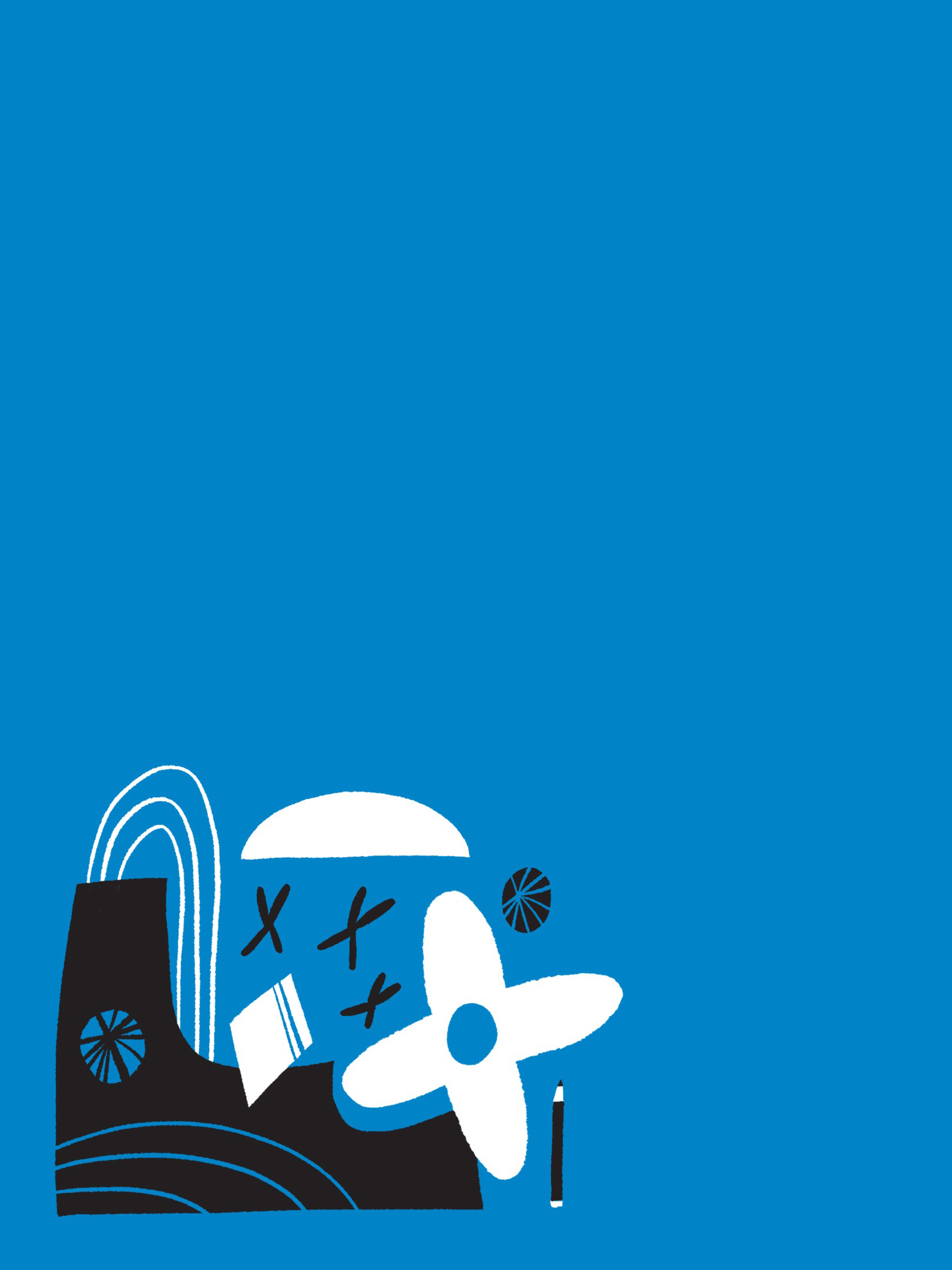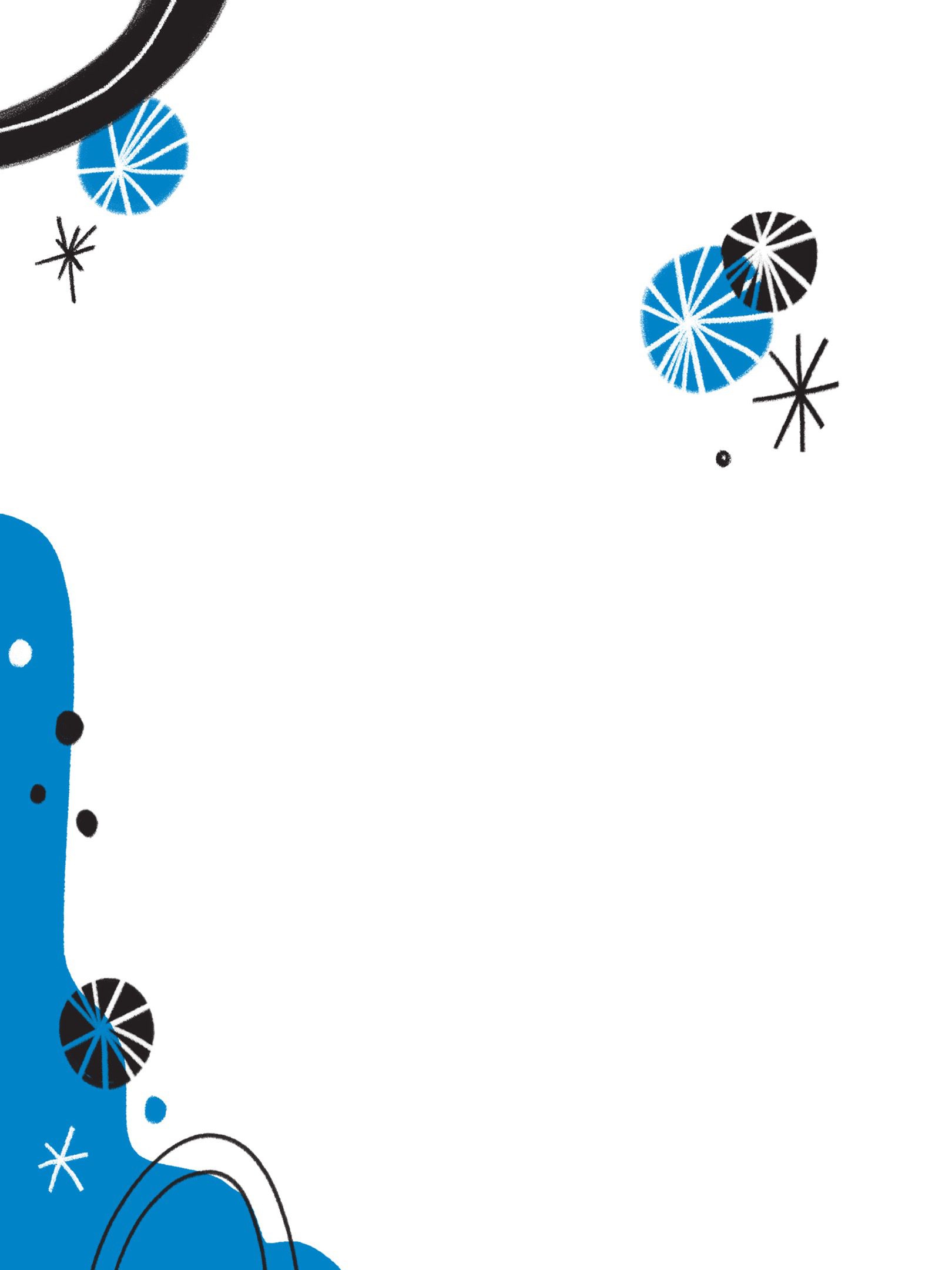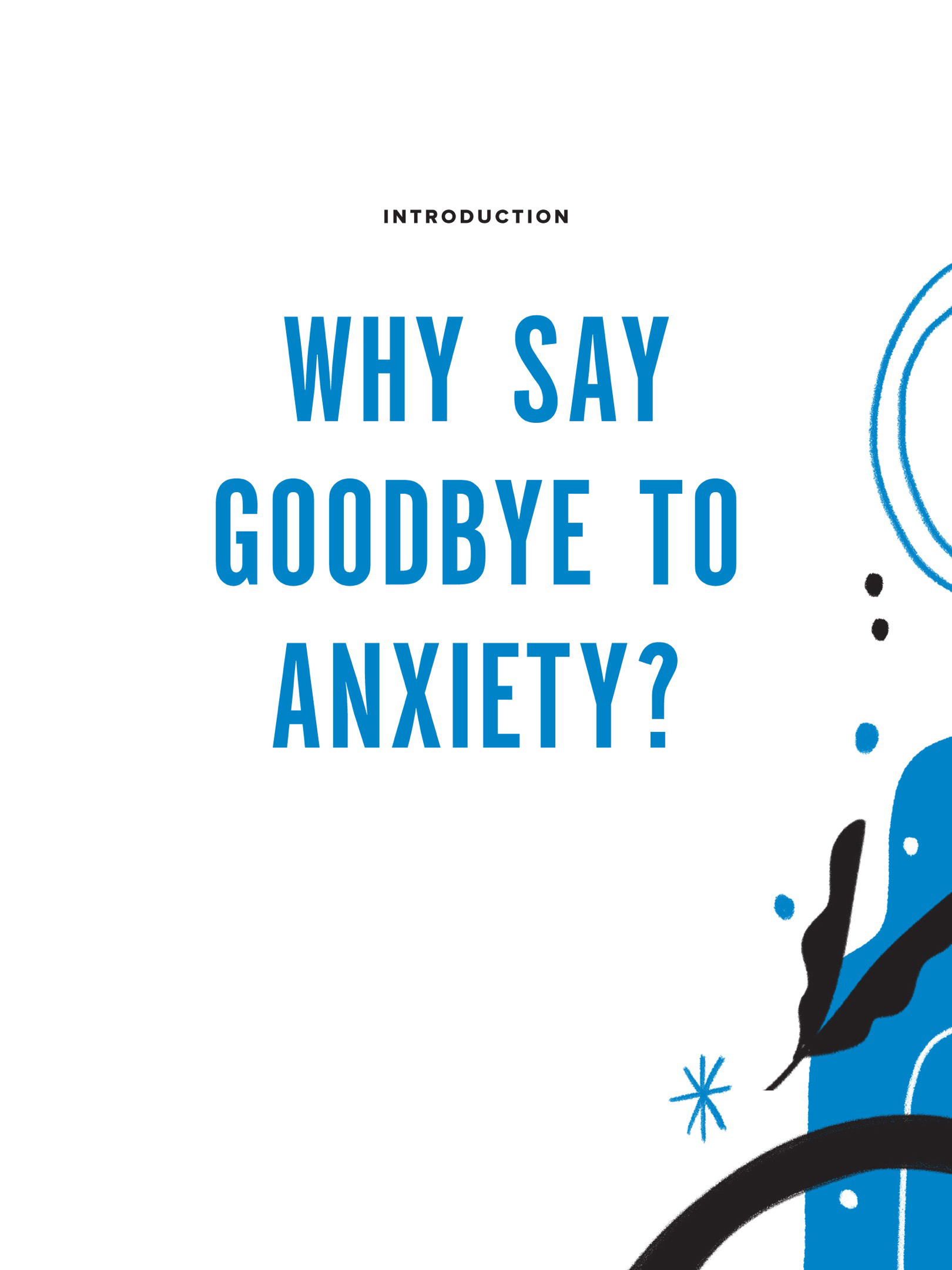Contents
Copyright 2021 by Terri Bacow, PhD
All rights reserved. No portion of this book may be reproduced or utilized in any form, or by any electronic, mechanical, or other means, without the prior written permission of the publisher.
SPRUCE BOOKS with colophon is a registered trademark of Penguin Random House LLC
Editor: Sharyn Rosart
Production editor: Jill Saginario | Copyeditor: Callie Stoker-Graham
Designer: Alicia Terry
Illustrator: Erin Wallace
ISBN9781632173904
Ebook ISBN9781632173911
Sasquatch Books
1904 Third Avenue, Suite 710
Seattle, WA 98101
SasquatchBooks.com
a_prh_5.8.0_139131139_c0_r1
This book is dedicated to Jay, Adam, Ruby, Lenny, and Marlene
The greatest weapon against stress is our ability to choose one thought over another.
WILLIAM JAMES
Anyone who has never made a mistake has never tried anything new.
ALBERT EINSTEIN
#GOODBYEANXIETY
While the technology does not yet allow us to write in this e-book, I urge you to choose a dedicated writing space for following the prompts in this guided journalwhatever works for you, be it a lined notebook, a blank journal, or a digital diary that you keep on your device. (In a pinch, these prompts can even be used as thought exercises, when you dont have time or space to put them down in writing.) Whats important is to write when you can, and enjoy the anxiety-reducing benefits that putting your worries into words will bring you.
CONTENTS
Vent about your worries by responding to a variety of prompts asking you about your anxiety.
Identify and challenge your anxious thought patterns that are creating stress.
Uncover key worry themes and learn ways to completely shift your perspective.
IF YOU ARE reading this book, you are probably familiar with the emotion that we call anxiety. Maybe just a little bit, or maybe a ton. Quite possibly, your anxiety is quietly a big deal for you, something that pops up and interferes in different aspects of your life. It may not always be a feeling that you are aware of at every moment, but it is likely always there. Anxiety can be stealthy, subtle, and super uncomfortable. However, there is good newsyou can make anxiety less uncomfortable if you learn to befriend and manage it! This book will help you do exactly that.
Where does anxiety come from? Anxiety is neurobiologicalit originates in our brains and bodies. This mind-body connection is why we experience physical symptoms (such as a racing heart, stomach butterflies, and muscle tension) when we feel nervous or scared. Anxiety is also highly geneticstudies show that some people inherit a tendency to experience anxiety more intensely than others. This tendency runs in families and is not anyones faultyou are born this way!
Everyone on earth feels anxious sometimes because anxiety is actually protective and adaptive. This means that during the evolutionary process, nature decided that feeling anxious might actually keep us safe. Back when people lived in caves, feeling worried about being attacked by a wild animal, for example, led you to appropriately freak out and run away when you saw one. Nowadays, if you are about to cross the street and a bus is hurtling at you, it is probably a good idea to let fear inspire you to swiftly step out of the way. From a safety perspective, having a fearful response to things that are actually really dangerous developed as a healthy adaptation.
If anxiety is so adaptive, why would anyone write a book about saying goodbye to it, or to be more accurate, learning to manage it? The reason is that today, many of us feel overly anxious way too much of the timeand often in situations where the anxiety isnt truly warranted. You dont need or want to be in the grip of fear all the time, or most of the time, or even in response to a particular situation, unless it is truly dangerous. To be honest, giving a presentation in front of your class or colleagues is not technically a life-or-death situationand it doesnt have to feel like one!
Anxiety becomes a problem when we experience it on a daily or very regular basis and it starts messing up our lives. If anxiety keeps you from falling asleep, distracts you from school or work, or causes you to cancel or miss out on events, it is interfering with your life. If your feelings of anxiety are distressing and deeply uncomfortable, that is when it is time to look for some help in managing it.
BIOLOGY + STRESS = WHAM!
What causes normal, adaptive anxiety to transform into a problematic feeling? Today, a lot of us experience constant, low-grade stressand if you never stop feeling stress, then it can become your default setting to be anxious all the time. When stress interacts with a biological predisposition to anxiety, instead of anxiety coming and going, it comes and stays.
Typically, there are three factors that contribute to developing problematic anxiety:
Observation: When we are genetically prone to anxiety and then we observe others acting anxiously (such as parents, teachers, or friends who may also have anxiety), we learn from this and may begin to mimic it.
Information: The news and social media can be full of scary events; when we are bombarded with frightening news, its easy to conclude that the world is dangerous and we should be nervous about it.
Experience: Almost everyone will experience some kind of anxiety-provoking life event (changing schools or a painful breakup, for example) or even a truly traumatic event (a divorce or serious loss, for example) that can set off an anxious reaction that is hard to let go of.
Any combination of these factors might leave you feeling upset and anxious more often than notin which case, its time to get some help.
WHAT IS ANXIETY?
Anxiety is different from fear and worry. Fear is a very present-moment feeling about a current real-world event, while worry is a speculative feeling about something that is potentially in the future. Fear happens when there is a bear in your path right now and you feel scared AF. Worry is when you are fretting about what is going to happen tomorrow, next week, or next year. Worry is a thinking problem: your thoughts tell you that situations (real or imagined) are most certainly going to be negative. Worry is an unavoidable part of being alive, but if it becomes a regular part of your life, it may be a symptom of anxiety. Fortunately, anxiety is something that can be treated with therapy. Healthy worry is specific and temporary; anxious worrying is general and persistent.
If you find yourself worrying more days than not, for a period of six months or more, and if you feel that it is difficult to control, you may meet the criteria for Generalized Anxiety Disorder (GAD). This is a very common experiencelots of people have GAD. It is uncomfortableand can even sometimes make you feel downright miserablebut the good news is that it responds very well to therapy. In this book, I am going to teach you many of the most effective tools used in therapy to vanquish anxiety.

